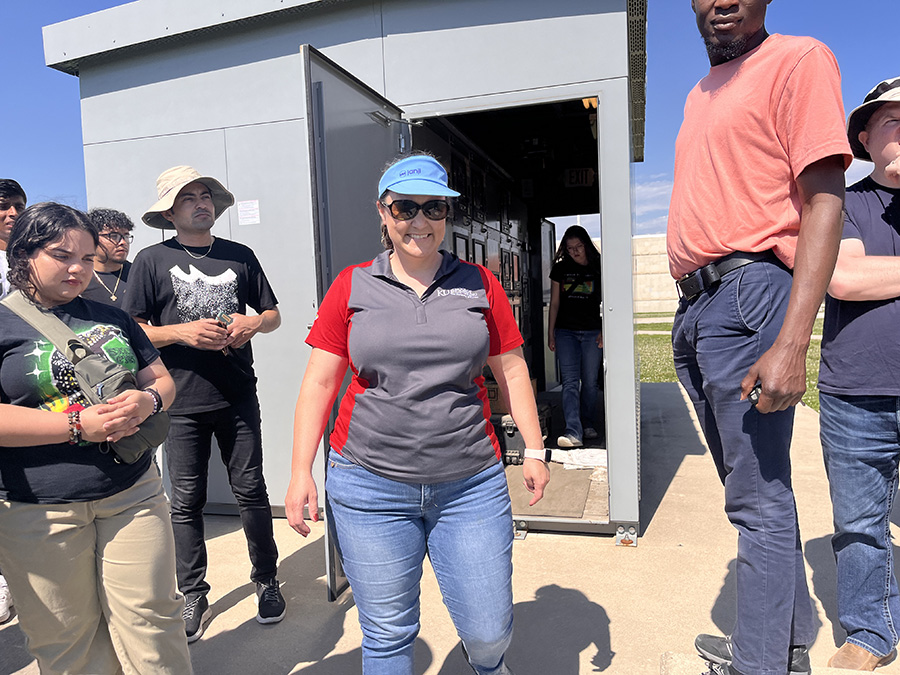
On June 13 the ARISE Research Experiences for Undergraduates (REU) program hosted an Infrastructure Day in Lawrence, Kansas for a total of 12 undergraduate students: 5 from the University of Kansas, 5 from Kansas State University, and 2 from Wichita State University.
The first stop on the tour was the Wakarusa River Wastewater Treatment Plant. Professor Belinda Sturm shared her granular sludge expertise with the group.
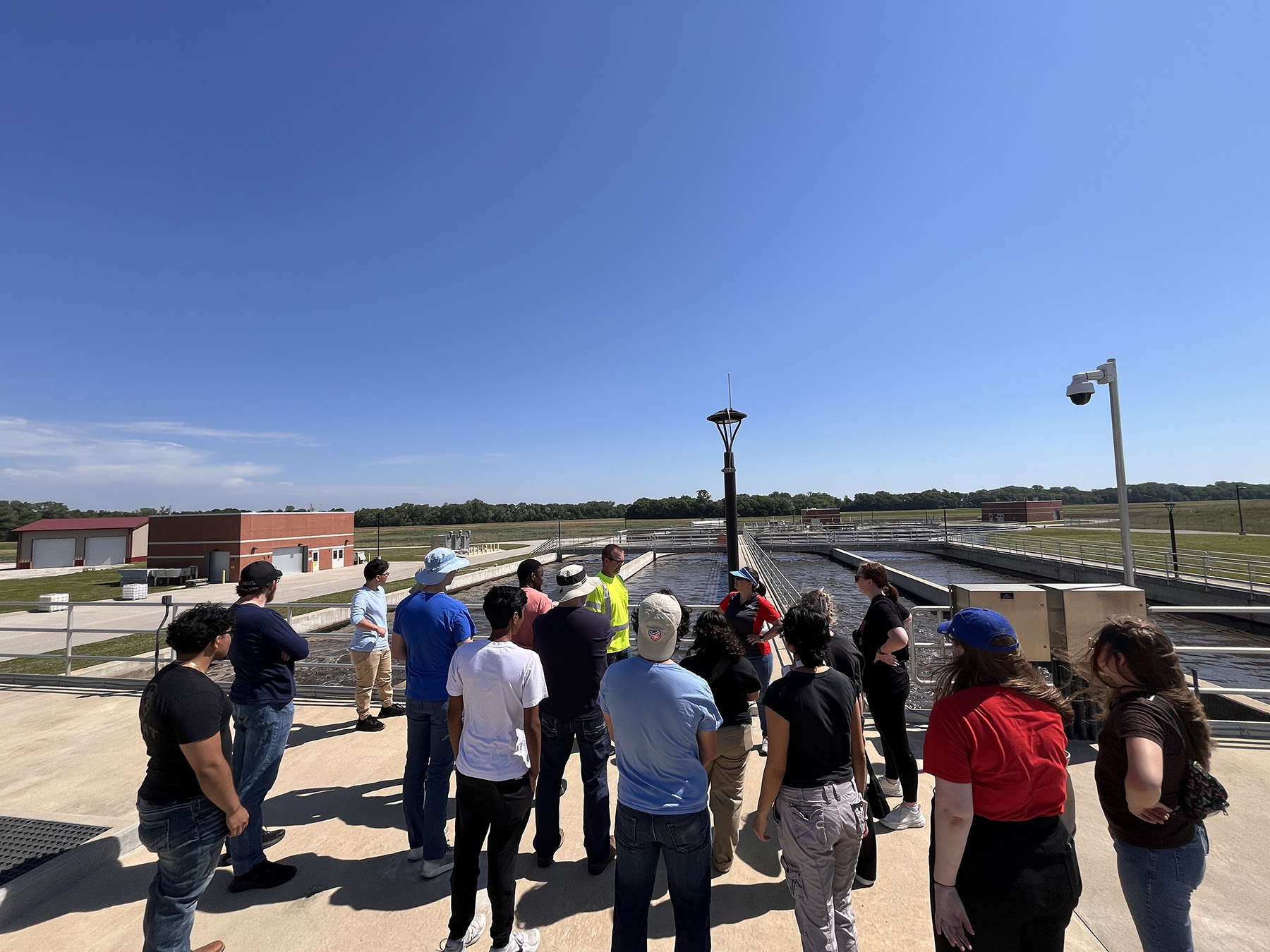
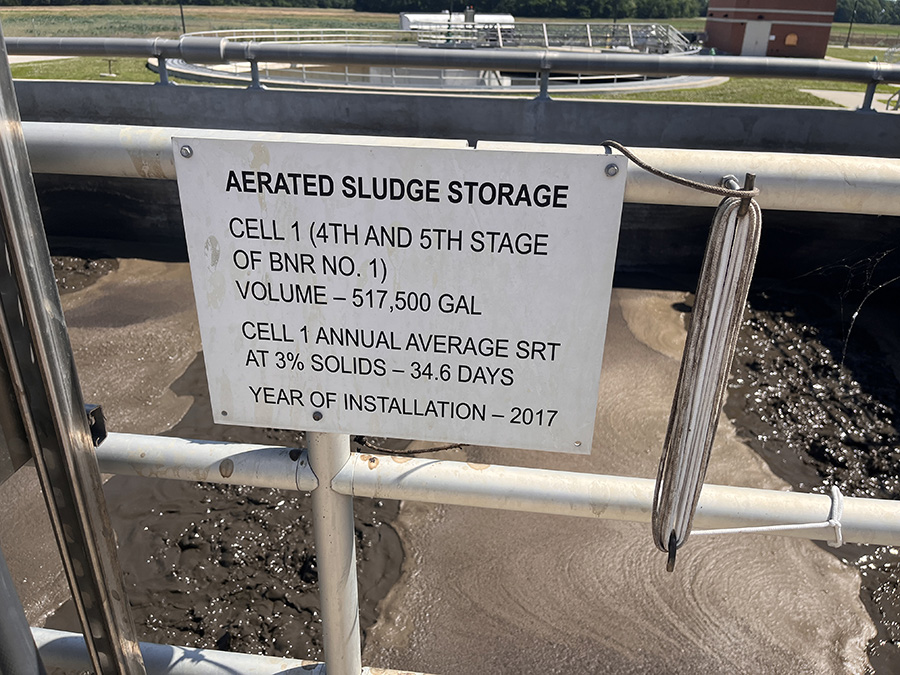
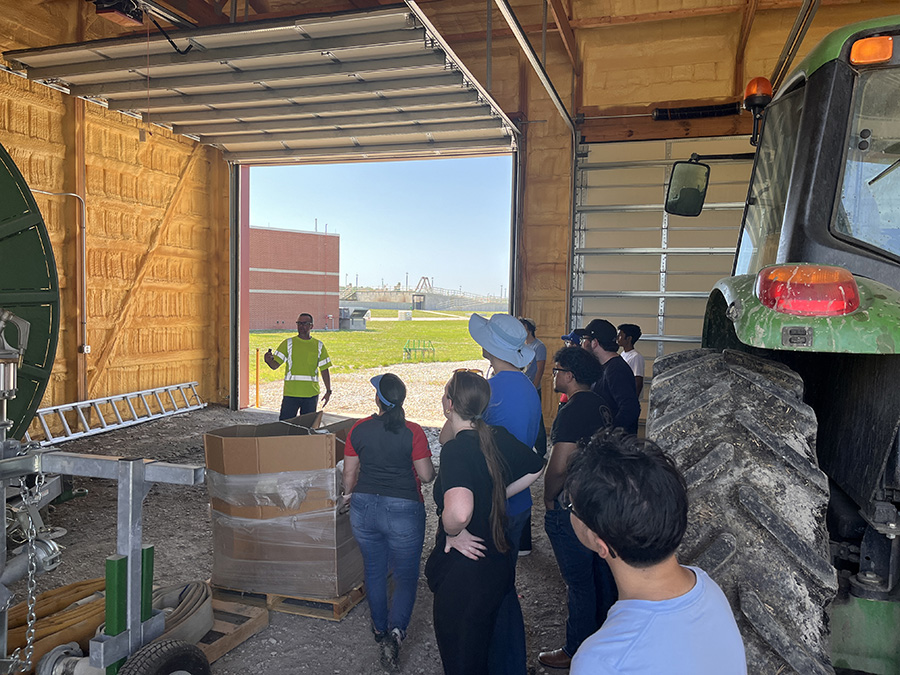

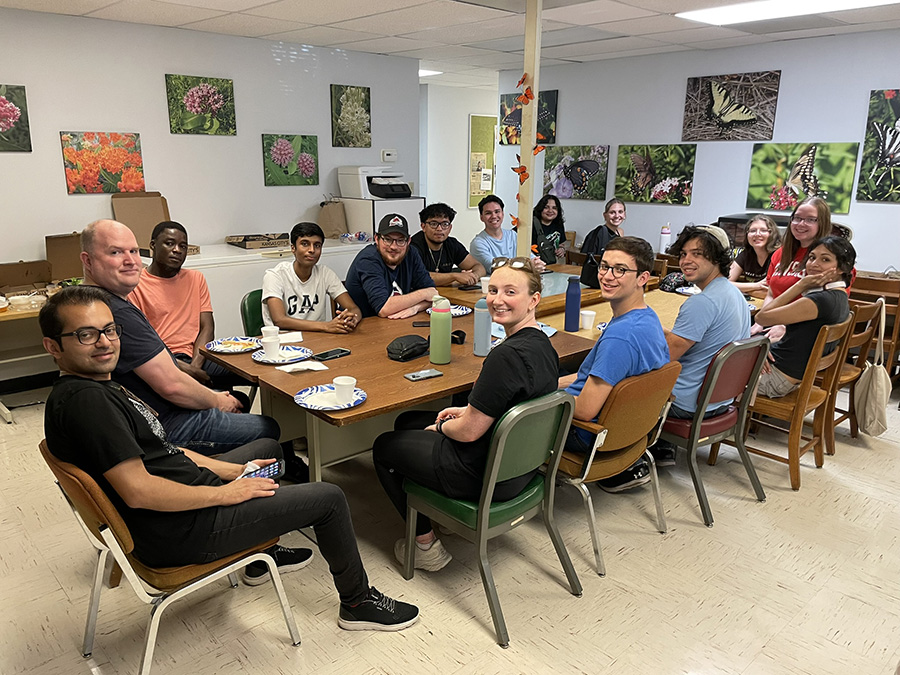
Lunch was provided by the Kansas NSF EPSCoR office at the Monarch Watch, a beautiful space on the KU campus featuring the importance of natural resources for ensuring healthy biodiversity.
The day concluded with a tour of the Lawrence Energy Center operated by Evergy.
Afterwards, we asked the students to reflect on three questions:
-
Can you share your thoughts on the role of infrastructure in resilience?
-
What are some examples of resilience you saw during the tours?
-
And can you connect these infrastructures and their impact to equity and justice?
Here’s how they responded:
“First I was amazed at the scale of the Evergy Energy Center. They had stated that they were a relatively small generation plant, but the size of the power plant, and coal pile dwarfed anything I could imagine.”
— Abe
“One form of resiliency that I saw on the Evergy Energy Center was the ability to switch the sources of power. The company could change between gas or coal depending on which source fit the situtuation the best.”
— Riley
“I also had no clue that the energy produced in Lawrence could be diverted to different parts of the United States to assist with damaged power grids and energy needs in other communities. Our tour group talked about how the plant had diverted energy to Texas when there was a large hurricane that devastated their power grids. There is clearly a lot of thought and consideration into the process of energy production and how energy plants like Evergy can impact equity and justice.“
— Maddie
“There was something that our tour guide said … about how wind, hydro, and solar energy were not yet adequate enough to sustain places on their own. This really struck a chord with me because when I think about using coal for energy, I think of its impact on climate change and the effects that ensue. However, until coal can be replaced completely for cleaner methods of energy, it is necessary in order to provide power, especially to areas that have been affected by a disaster.“
–Anexi
“To learn that we are so reliant on this power plant but that its newest unit is 52 years old was scary. I feel that relying on such old units for such a large amount of power that keeps growing with demand can have a serious strain on the resilience of the plant and regional power generation as a whole. However, I am glad they still have two functioning units, as if one unit were to break, they can use the other unit in its place…”
–Lily
“Starting with the wastewater treatment plant just the shear amount of duplicate machinery they had just in case something were to happen to the primary machine shows resiliency to me.”
–Marah
“Infrastructure not only supports the day-to-day functioning of society but also provides a safety net during a crisis. The redundant structures in the wastewater plant are a good example of this. This ensures that even if one part of the system fails, the plant can continue operating and prevent public health crises.”
–Rahul
“I never really thought about the redundancy that has to go into infrastructure to ensure that the local area will still operate normally if disaster strikes. I liked how planned out everything was the architects and engineers really thought about almost everything except the tornado that hit. Even when it did hit they were able to bounce back.”
–Brian
“Seeing the connections for how else the wastewater is used was fun, too. Like how they make a kind of manure. Which can then be used to help put nutrients back into the soil. These are some of the connections I see to resilience that an infrastructure helps with more than one problem.”
–Tristan
“The energy plant was an infrastructure that I believe is equitable since they stated that the city would not be able to operate without burning coal, since its cheaper and reliable. This allows many underpaid communities to be able to have power.”
–Crystal
“At the wastewater treatment plant, resilience was evident in their use of advanced technologies to handle fluctuating waste loads and ensure clean water even during peak times or emergencies…These infrastructures directly impact equity and justice by ensuring all communities have access to clean water and reliable energy, which are fundamental to health and well being.
–Dylan
“I’ve always liked logistics and planning, however, I don’t think I understood the maintenance required for these systems … as we’d like to think we’ve prepared, it’s not always enough. Therefore, it is just as important that a community is able to recuperate/repair in a manner that is quick and efficient while also considering the needs of the people and how they can contribute…While infrastructural systems like these are important, we must not forget that it is the people who use them. People are the heart of a community.
–Julian
